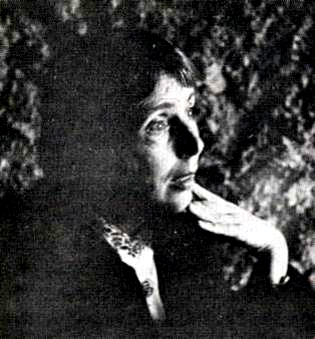
| Next Page |
 |
Hedi Mertens | |
| and Letters from India | ||
| Letter I | ||
In the summer of 1938, Hedi Mertens was deathly ill and wanted to either die or be cured with Baba. Baba allowed her to come to India together with Helen Dahm and Irene Billo. A grandmother took care of Hedi's 4 children and husband. In India her health very much improved under Baba 's loving care, but she had to stay for many months and only returned shortly before the beginning of World War II. |
Walter Mertens had introduced his wife Hedi to Meher Baba in 1933. In 1934 and 1937 Baba repeatedly spent several weeks in their house during his stays in Europe. But when Hedi was in India for such a long time, Walter missed her very much and once let out his frustration and anger, in his letter to her making sarcastic remarks about Baba's "harem". Hedi of course was upset and replied accurately to the offences. Each outgoing letter had to pass by Baba's hands. He also weighed hers, shook his head and returned it in disapproval. In her new letter Hedi ignored Walter's rebuke and casually described their daily life, compiled with some interesting details. Again Baba held the letter in his hand, shook his head and returned it, signifying; "Satisfy his hunger!" So Hedi wrote a third letter, this time showing her love for Walter and the children, how she looked forward to coming home soon, how she remembered them always in love and was longing for all. Baba held the letter, smiled his approval, and so this letter was sent off.
When I visited Switzerland in 1980, Hedi Mertens was living in a little town carved out of the hills above Lugano. From the city, the bus took its time climbing up the winding road to her hillside country home. I realized, as I watched the sailboats on Lake Lugano growing smaller and smaller, that this one narrow road was the life-line from all the houses, farms and villages along the way, to the formal banking city below. Eventually, we reached Carona, a cluster of buildings standing right up against this narrow "Main Street." We were greeted by chickens and goats running wild as we got off the bus; there was a donkey, too, that no one had bothered to tie up. This spot was the bus's last stop, but the road continued steeply up through the town, splitting the one hotel in half, and forcing the few stores to open their doors right onto it. In the days to follow, as I took walks up that road through town, I found passageways leading to elaborate courtyards and gardens behind the street facade, revealing the secret life of Carona.
The buildings at the heart of town gradually opened up to small fields of wild flowers; Hedi lived just beyond one such field. Up until now, I had only known Hedi Mertens through her pictures - those beautiful photos taken in Zurich of her and her children sitting with Meher Baba. The time was 1934, during His eventful trip to Fallenfluh. Now, it was almost 50 years later as I made my way toward her little cottage. Feeling a bit shy, I stopped to pick wild flowers along the way so I'd have something to offer her (too late now to think of other gifts - the closest store for that was a long bus ride away). Hedi's house was at the end of a country lane. Flowers in hand, I knocked and entered to see Hedi seated in a hospital bed, looking very stately - her long white hair brushed off her face and falling to her shoulders. Though she had suffered a stroke and couldn't walk,
| Next Page |